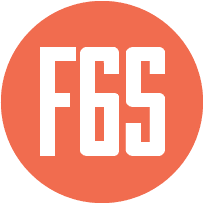3. P2P Networking & Torrenting:
a. Initialization & Peer Discovery:
-
DHT & Peer Discovery: When a game client is initialized, it connects to the BitTorrent DHT to discover other peers and get the latest state of the game world.
-
WebRTC Signaling through DHT: Once peers are discovered, the client can use the DHT as a signaling mechanism to establish direct WebRTC connections with other game clients.
b. Dynamic Torrent Creation & Real-time Block Changes:
-
Creating Torrents: When a player makes a change to a chunk (or even just a block), they can create a new torrent for that modified chunk.
-
Metadata Broadcast: Alongside the new torrent, the client broadcasts metadata (like version, timestamp, and hash) to its connected WebRTC peers, signaling the availability of an updated chunk.
-
Fetching Updates: Peers, upon receiving this metadata and determining they need the update, can fetch the new chunk using BitTorrent.
c. Real-time P2P Communication with WebRTC:
-
Data Channels for Game Events: WebRTC's data channels allow clients to communicate game events in real-time. This includes player movements, interactions, block modifications, chat messages, and more.
-
Reducing Redundancy: Only the delta (change) is sent over the data channel rather than the entire chunk. For instance, if a block is modified, only the coordinates and the new state of the block are sent.
-
Local Proximity Prioritization: Clients prioritize WebRTC connections based on in-game proximity. If two players are close in the game world, their updates are more relevant to each other, so they prioritize their real-time communication.
d. Conflict Resolution & Validation:
-
Micro-transactions: Given the decentralized nature, it's possible for two players to make conflicting changes. By limiting updates to specific blocks (micro-transactions), conflicts are reduced in scope.
-
Consensus Mechanism: If a conflict arises (e.g., two players modify the same block simultaneously), the client can use a simple consensus mechanism, such as prioritizing based on timestamps, it its a match they both bounch back a block.
-
Validation: Before accepting an update from another peer, clients quickly validate the change to ensure it adheres to game rules and is a valid change to the ledger and blockchain.
e. Caching, Seeding, and Resource Management:
-
Local Caching: Clients cache frequently accessed and recently modified chunks to reduce the need for fetching them from the network.
-
Intelligent Seeding: Players can choose to seed important chunks (e.g., their own constructions or popular areas) or even be incentivized to do so through in-game rewards.
-
Resource Management: The client can be designed to limit the resources (bandwidth, CPU, etc.) used for background tasks like seeding to ensure a smooth gaming experience, but players will be incentivised to contribute computer hardware resources to the network though energy tokens.
f. Extending for Additional Features:
-
Streaming Game Assets: Beyond just the game world, BitTorrent can be used to distribute and update game assets, such as textures, models, sounds, and more.
-
Voice & Video Communication: WebRTC supports voice and video communication, which can be integrated for in-game chat or even for video conferencing within the game world.
Conclusion:
Integrating BitTorrent and WebRTC offers a robust solution for creating a decentralized, real-time game environment. While BitTorrent excels at distributing large chunks of data efficiently, WebRTC bridges the gap for instantaneous, peer-to-peer communication. The combination ensures both the scalability of a distributed system and the real-time interactivity essential for immersive gaming. However, this model's success hinges on rigorous testing, optimization, and possibly integrating additional decentralized solutions for specific challenges that might arise.

